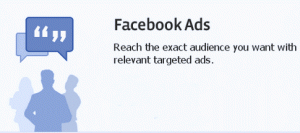Paid Facebook ads hold tremendous promise for marketers looking to reach targeted audiences. Where else do people willingly share such specific information about themselves – enabling marketers to target ads and evaluate their performance based on consumer information such as age, interests, employment status, location and even one’s relationship status?
 However, the challenge that Facebook advertisers experience is that Facebook users aren’t necessarily actively searching for products or services. That’s why carefully selected images, calls-to-action and messages – specific to this advertising channel – are important for success.
However, the challenge that Facebook advertisers experience is that Facebook users aren’t necessarily actively searching for products or services. That’s why carefully selected images, calls-to-action and messages – specific to this advertising channel – are important for success.
Here are a few insider tricks that you can use to take your Facebook targeting and ad performance to the next level.
1. Remember User Experience
Many marketers start using Facebook ads expecting to drive traffic directly to their website. While this may work for some, tailoring the experience for a Facebook user typically delivers better results. Try promoting your company using a Facebook Business Page or Facebook Applications. This will maintain a consistent browsing experience and result in a lower bounce rate.
Directing people to your Facebook Page rather than your website makes it easy for consumers to “Like” your product or brand, and every user who ‘Likes’ your page is a potential for future marketing through status updates about deals and upcoming events. Facebook Apps, on the other hand, provide the marketer with more control over the user experience, as well as the ability to gather detailed demographic data from user profiles.
If you truly require sending people to your website, consider tailoring your landing pages to social users. This could include writing different ad copy, including ‘Like’ and ‘Share’ buttons on your site and presenting user-generated content such as videos or reviews, as opposed to product information.
2. Expand Your Targeting Parameters
Facebook users can utilize any terms they wish when defining their likes and interests, so in order to target a full range of potential customers, you may have to do some investigating for terms and phrases that go beyond your general keyword list. For example, by using the target parameter “camping,” your ad will not reach users who have listed “camping in the mountains” or “tent camping” on their profile.
Expand your targeted keyword list by typing the ‘root word’ (i.e. “camping”) into Facebook’s “Likes & Interests” target settings, and then type a single letter to find related terms. Using the camping example, entering “camping i” results in a list that includes “camping in California” and “I love camping.” Adding these unique terms to your targeting criteria expands your audience, helping you reach additional valuable consumers and improve ROI.
3. Segment Your Ads
With 500 million users on Facebook, there are probably plenty of consumers that you want to reach with your ads. However, Facebook users are all very different. Start by breaking down your target audience into different segments and establish the value of each. Then adjust your bid rates accordingly to help optimize your Facebook budget.
Dividing audiences by age, location, and gender should help you find the segments most likely to convert, making each segment more valuable to you. As you measure the performance variance between your segmented advertisements, you can adjust your bids to improve the overall ROI for your Facebook ad campaigns.
4. Make Sure Your Ad Gets Seen
 People use Facebook to interact with friends, share photos and play games, not to look for products and services, so… your ads need to grab their attention. The most successful ads include colorful, engaging images — and of course, a compelling and relevant offer. Adding borders to your photos in colors such as orange or yellow, which contrast with the blue and white Facebook interface, is a simple way to pull the user’s eye in the direction of your ad.
People use Facebook to interact with friends, share photos and play games, not to look for products and services, so… your ads need to grab their attention. The most successful ads include colorful, engaging images — and of course, a compelling and relevant offer. Adding borders to your photos in colors such as orange or yellow, which contrast with the blue and white Facebook interface, is a simple way to pull the user’s eye in the direction of your ad.
Make sure you test your ad performance often, as the results will surprise you — the most-clicked ads are not necessarily the most aesthetically pleasing; they are often the ones that stand out on the page. Also, because ads can be served to the same users on multiple occasions, users will start to tune out repeat ads, so keep your approach creative and fresh. Rotating images and headline copy as performance drops over time can help boost click-through rates.
Conclusion
The Facebook advertiser base is still relatively small in comparison to the Facebook audience. As a result, costs-per-click rates remain lower than paid search and other channels, so now is a great time to start advertising on Facebook. As advertisers continue to shift dollars to Facebook, costs will rise, and advertisers that have managed to build a fan base early will be better positioned to reap dividends from their investment. By using the tips above to target and optimize your Facebook ads, you should have a head start in Facebook marketing.



